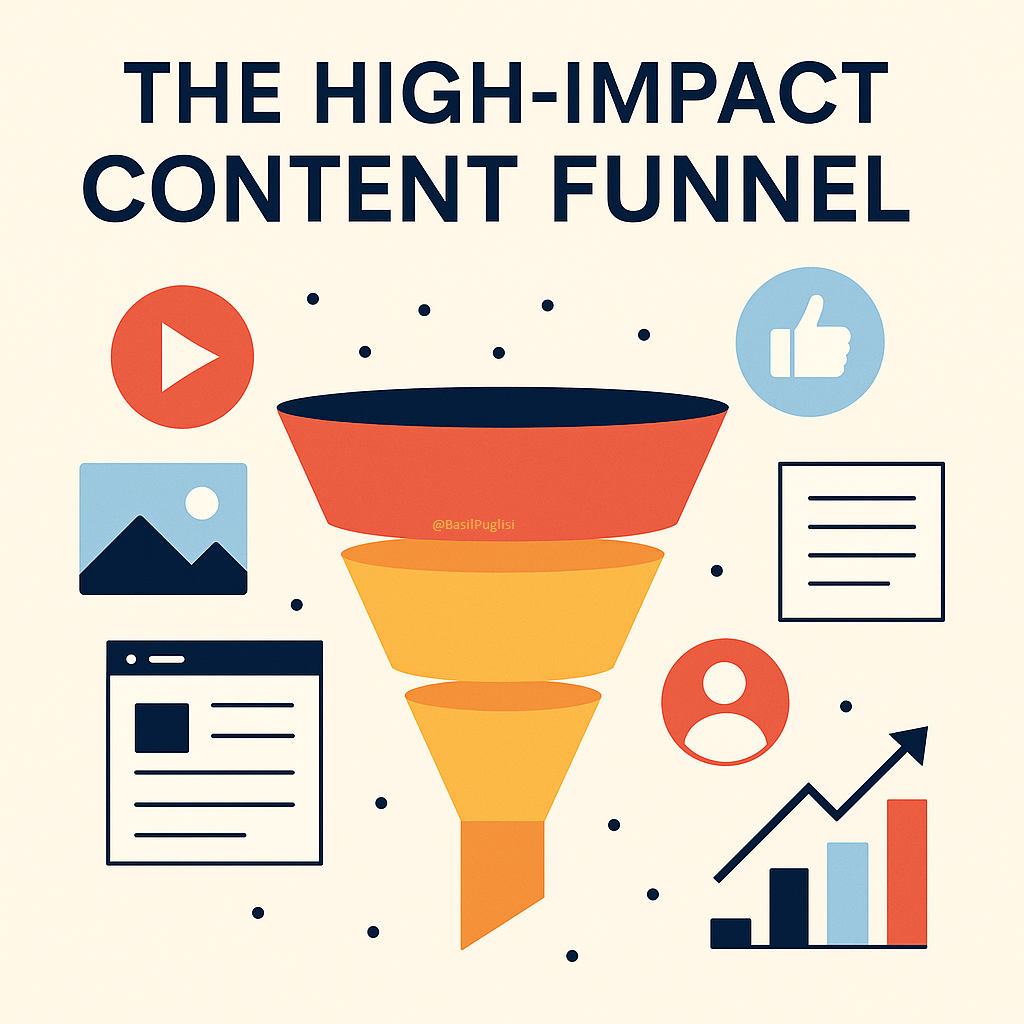Guiding audiences from first spark to confident conversion with precision and purpose
Great content moves people, but its full potential emerges when it sits within a well-orchestrated funnel that addresses each stage of the buyer’s journey. From the moment awareness is sparked to the point where a purchase decision is made, the high-impact content funnel is designed to meet audiences exactly where they are — delivering the right information, on the right platform, at exactly the right time. This deliberate approach not only reduces drop-offs but ensures your marketing resources are spent on the messages most likely to move prospects forward.

In 2022, searches for “content funnel strategy,” “sales funnel optimization,” and “marketing automation” surged as brands recognized that random acts of content were no longer enough. The future belongs to marketers who design systems, not just assets — aligning awareness, consideration, and conversion stages so they work together instead of operating in silos.
B2B vs. B2C Perspectives
In B2B, a funnel often starts with in-depth white papers, thought leadership webinars, or industry research that builds credibility at the awareness stage. Prospects then progress to detailed case studies, ROI calculators, and targeted email sequences before reaching the conversion point with a personalized demo or trial.
B2C funnels lean into speed and emotion. Awareness is generated through social videos, influencer partnerships, or blog content, consideration is fueled by reviews and comparison guides, and conversion is driven by targeted offers or retargeted ads. In both contexts, timing and personalization matter just as much as the content itself.
Factics
What the data says:
• Nurtured leads make purchases nearly 50% larger (Marketo).
• Aligning sales and marketing messaging can more than double revenue from marketing investments (HubSpot).
• Over two-thirds of buyers now rely on content research before making a decision (Demand Gen Report).
• Automated email campaigns generate 3x the revenue of manual sends (Campaign Monitor).
• Personalized CTAs outperform generic ones by more than 40% (HubSpot).
How to apply it: Map content offers to each funnel stage — awareness content should educate, consideration content should differentiate, and conversion content should motivate action. Use marketing automation to deliver timely, behavior-triggered messages without constant manual oversight. Regularly audit funnel performance to identify drop-off points and adjust messaging accordingly. Integrate personalization at every touchpoint to increase relevance and response rates.
Platform Playbook
• HubSpot: Comprehensive funnel management, lead scoring, and automated workflows.
• Salesforce Pardot: Enterprise-level nurturing with advanced ROI tracking.
• ActiveCampaign: Scalable automation and segmentation for growing businesses.
• Mailchimp: Accessible automation and audience targeting for small businesses.
Best Practice Spotlight
Demandbase demonstrates the power of intent data in fueling a high-impact content funnel. By detecting where a prospect is in their journey and serving up the right content at the right time, they accelerate conversions while deepening engagement. Their model shows how aligning insights, automation, and creative execution produces both scale and precision.
Hypotheticals Imagined
Scenario 1 – SaaS Funnel Optimization
Background: A SaaS provider wants to increase demo bookings.
Execution: Gate a high-value industry report for lead capture, follow with an automated sequence featuring customer success stories, and offer a one-click demo scheduling link.
Expected Outcome: Higher demo-to-close ratio with shorter sales cycles.
Potential Pitfalls: Over-reliance on automation without enough personal touch.
Scenario 2 – Fashion Retail Conversion
Background: An online clothing brand aims to boost repeat purchases.
Execution: Awareness through influencer try-on videos, consideration via authentic customer reviews, and conversion driven by limited-time personalized offers triggered by browsing behavior.
Expected Outcome: Improved lifetime customer value and repeat purchase rate.
Potential Pitfalls: Generic offers eroding perceived exclusivity.
Scenario 3 – Local Service Growth
Background: A landscaping business wants more booked appointments.
Execution: Capture leads with an interactive quiz (“What’s Your Yard Style?”), follow with tailored video tips, and send automated appointment reminders.
Expected Outcome: Increased bookings and stronger community reputation.
Potential Pitfalls: Low quiz participation if promotion is limited to one channel.
References
Marketo. (n.d.). Lead Nurturing Statistics.
HubSpot. (n.d.). The State of Inbound.
Demand Gen Report. (n.d.). Buyer Behavior Research.